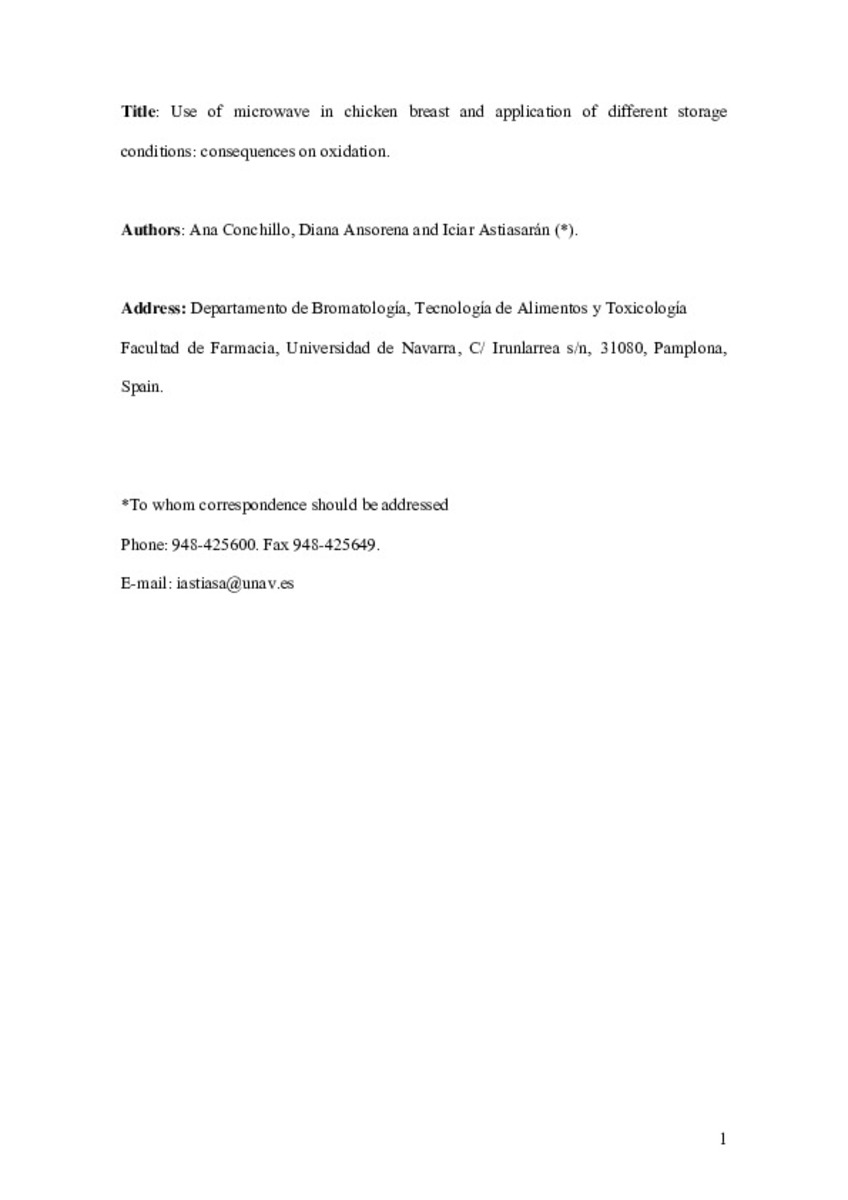Use of microwave in chicken breast and application of different storage conditions: consequences on oxidation
Keywords:
Cholesterol
COP
Modified atmosphere packaging
Vacuum
Refrigeration
Freezing
Citation:
Conchillo A, Ansorena D, Astiasarán I. Use of microwave in chicken breast and application of different storage conditions: consequences on oxidation. Eur food res technol 2005;221(5):592-596.
Statistics and impact
0 citas en

0 citas en

Items in Dadun are protected by copyright, with all rights reserved, unless otherwise indicated.











